BUCKET LIST FOR THIS REGION
- Spend an evening at the Okaukuejo waterhole to watch rhinos
- Spot four of the Big Five in Etosha
- Be intrigued by the mysterious Lake Otjikoto
- Eat mopane worms at the Oshakati open market
- Do a homestead tour to learn about the Aawambo culture
Etosha National Park
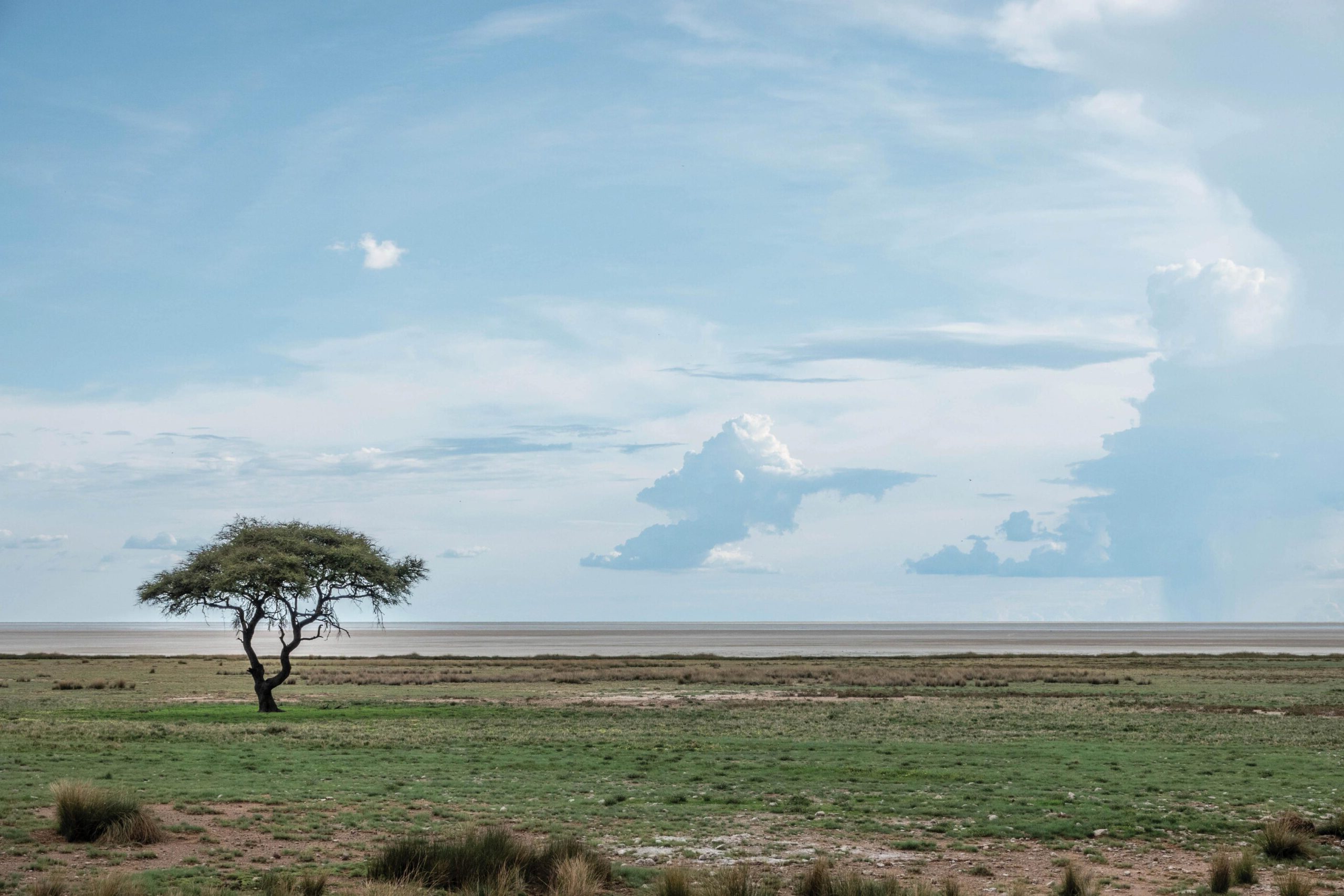
ETOSHA PAN
Etosha owes its unique landscape to the Etosha Pan, a vast, shallow chalky white depression of approximately 5 000 km² that forms the heart of the park. Once a large inland lake fed by the early Kunene River and other rivers from the north, it began drying up about three million years ago when the Kunene was diverted to the Atlantic Ocean. A series of waterholes along the southern edge of the pan guarantee rewarding and often spectacular game viewing. In good rain years the pan fills with water draining southwards from Angola via a delta-like system of shallow rivers and oshanas, drying out in the winter to become an austere expanse of white cracked mud, shimmering with mirages and upward spiralling dust devils. What we call Etosha today was proclaimed as Game Reserve No 2 in 1907 by the German Governor Friedrich von Lindequist. With subsequent additions it became the largest game reserve in the world, covering a vast area of ±80 000 km². For political considerations its size was progressively diminished, until by 1975 it had been reduced by 77 per cent to its present surface area of 22 912 km². Nevertheless, it is still one of the largest game reserves in Africa.
BIRDING IN ETOSHA
Some 340 bird species occur in Etosha, about one third being migratory, including the European Bee-eater and several species of wader. Larger birds include Ostrich, Kori Bustard and Greater and Lesser Flamingo, of which tens of thousands congregate on the pan to breed during a good rainy season. Ten of Etosha’s 35 raptor species are migratory. Those most commonly seen are Lappet-faced, White-backed and Hooded Vultures, while sightings of the Cape, Egyptian and Palm- nut Vultures have been recorded. There are eight species of owl, including the Pearl-spotted Owlet and Southern White-faced Scops- Owl, and four species of nightjar.
WILDLIFE
Of the 114 mammal species found in the park, several are rare and endangered, such as black rhino and cheetah, and the lesser-known black-faced impala, which is endemic to northwestern Namibia and southwestern Angola. Etosha’s current population of black rhino represents one of the largest populations of black rhino in the world.
Other large mammals in the park include elephant, giraffe, blue wildebeest, mountain and plains zebra, hyaena and lion. Cheetah and leopard complete the trio of ‘big cats’. Antelope species range from kudu, gemsbok and the large and stately eland to the diminutive Damara dik- dik. Smaller mammals include jackal, bat-eared fox, honey badger, warthog and the ubiquitous ground squirrel. For the greater part of the year (the dry season) Etosha’s animals and birds are dependent on about 30 springs and man-made waterholes. These provide excellent game viewing and photographic opportunities. A good policy before setting out is to enquire from camp officials what the current game movements are. During the rainy season, the birdlife at the main pan and Fischer’s Pan is well worth viewing. Etosha’s vegetation varies from dwarf shrub savannah and grasslands, which occur around the pan, to thornbush and woodland savannah throughout the park. Eighty per cent of all of Etosha’s trees are mopane. West of Okaukuejo is the well-known Sprokieswoud – Fairy, Phantom or Haunted Forest – the only place where the African moringa tree, Moringa ovalifolia, grows in such a large concentration on a flat area. Etosha is open throughout the year and accessible by tarred roads via the Andersson Gate on the C38 from Outjo, the Von Lindequist Gate in the east from Tsumeb on the B1, the Galton Gate in the west from Kowares on the C35 and the King Nehale Gate located on the Andoni plains just north of the Andoni waterhole, which provides access from the north-central Owambo regions on the B1 from Omuthiya.
Gateways to Etosha
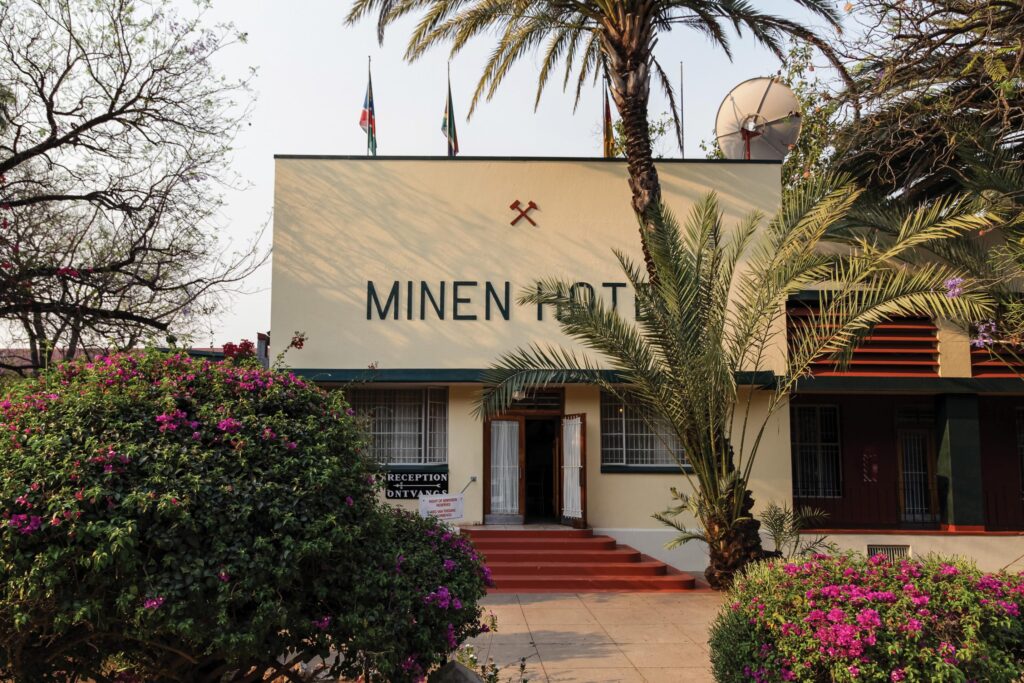
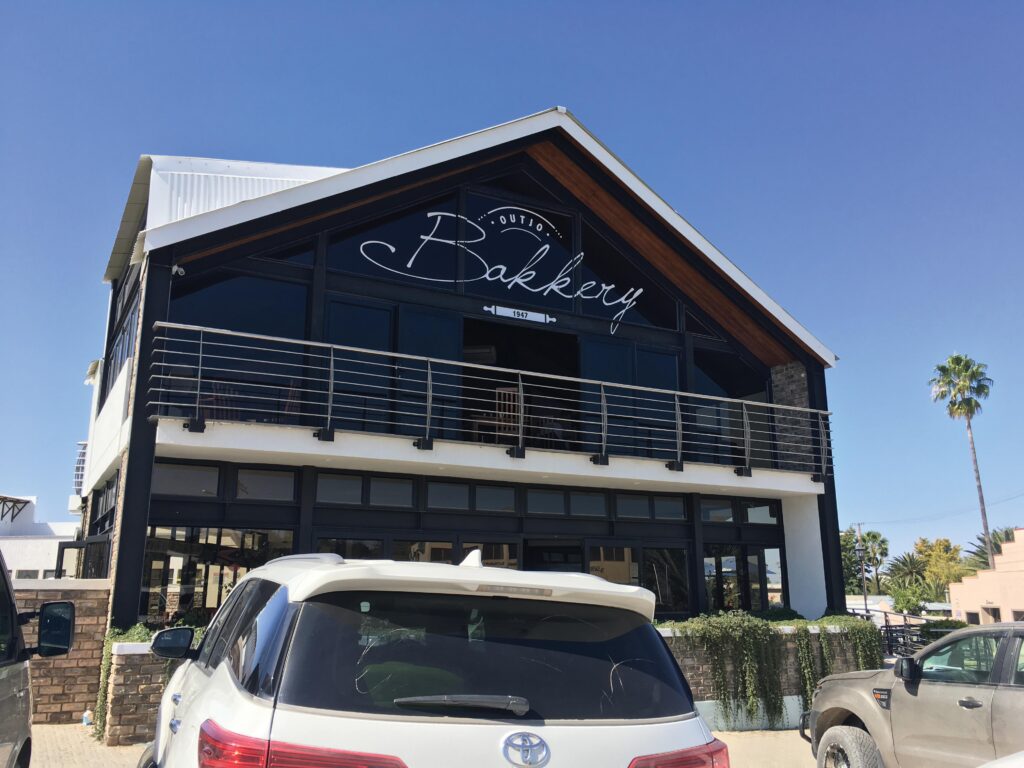
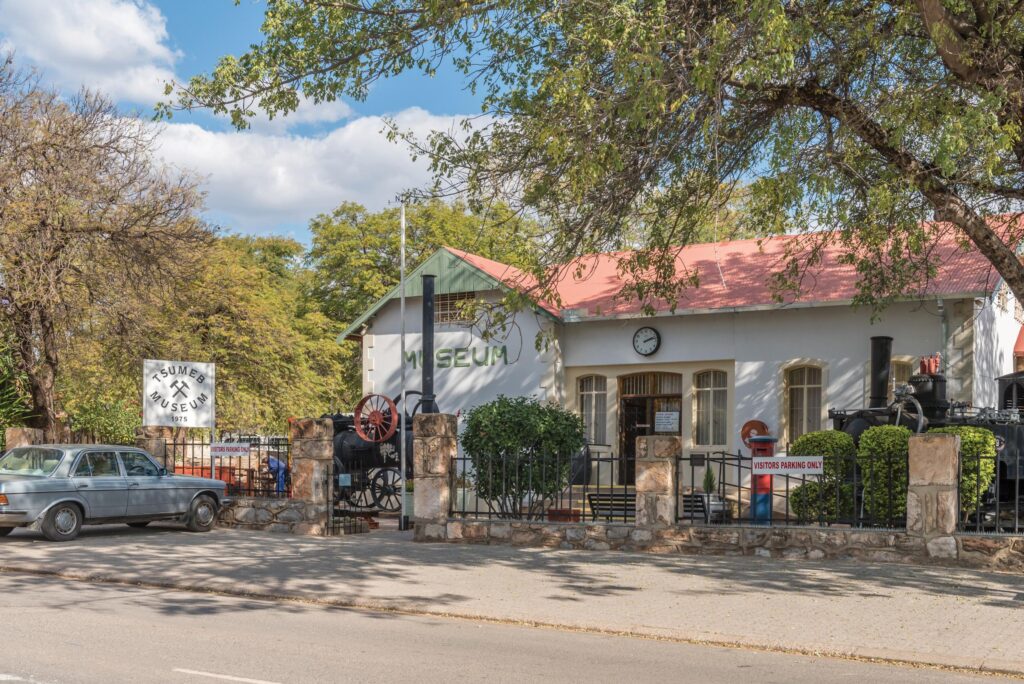
OUTJO
Located amidst a cluster of low hills is the town of Outjo, an important cattle-ranching centre and regarded as Etosha’s gateway to the south. Situated on the C38, Outjo is about 100 km from the Andersson Gate. The history of the town and surroundings is depicted in the Outjo Museum, where the focus is on gemstones and wildlife. The museum is housed in Franke House, built in 1899 for the German commanding officer, Hauptmann Franke. The Naulila Monument was erected in 1933 to commemorate the 12 German soldiers who lost their lives in the attack on the Portuguese military post at Naulila in southern Angola on 18 December 1914. The attack was launched in retaliation for the death of the District Commissioner of Outjo, two military officers and an ‘African police servant’ in an incident that took place in Naulila earlier. Also of interest is the Water Tower, built in 1900 to provide fresh water for the German soldiers, their horses and the hospital. Outjo Bakkery, a good place to stop for refreshments, offers tasty freshly baked delicatessens.
TSUMEB
Accessed from the B1 and situated about 96 km from the Von Lindequist Gate, the town of Tsumeb was founded in 1905. While initially closely linked to the mining industry, operations have been scaled down considerably. The colourful jacarandas, flamboyant trees and bougainvillaea that line the town’s streets have earned Tsumeb the title ‘Namibia’s garden town’. The history of the town is depicted in the Tsumeb Museum, where a comprehensive collection of rare minerals can be viewed. An interesting facet of the Tsumeb Museum is the Khorab Room, displaying a collection of restored cannons and other armaments dumped into Lake Otjikoto by retreating German forces shortly before the signing of the Khorab Peace Treaty in 1915. It is estimated that at least 30 cannons and 4 500 boxes of ammunition were plunged into the lake. The museum is housed in the former German Private School Building, constructed in 1915, now a national monument. The Tsumeb Arts and Crafts Centre, situated in the main street, is run by an educational trust promoting traditional arts and crafts. An African-style, open-air market on the outskirts of Tsumeb gives small traders the opportunity to sell their wares. The Arts Performance Centre is another popular attraction in Tsumeb. The centre presents concerts, African dance, music, and typical plays from the north of Namibia for tourists. The Tsumeb Cultural Village, also known as the Helvi Mpingana Kondombolo Cultural Village – named after founding president Sam Nujoma’s mother – is located in the southern outskirts of town. This community project is presented as an open-air museum, where exhibits display the life, history and culture of the majority of Namibians. The centre also hosts a curio shop. The oldest building in town is the Otavi Minen und Eisenbahn Gesellschaft (OMEG) Minenbüro, completed at the end of 1907, while the Second Director’s House, erected in 1912, is the second-oldest building. The latter still houses some of the original furniture and retains its original appearance. St Barbara’s Roman Catholic Church, which was built in 1913, is one of the town’s most prominent landmarks. The Tsumeb Airstrip meets International Civil Aviation Organisation standards and is the closest commercial airstrip to Etosha National Park.
Map of Etosha National Park
Towns north of Etosha
OSHAKATI, ONGWEDIVA, ONDANGWA
Owambo’s two main centres, Oshakati and Ondangwa, are in the Oshana Region. These two bustling towns have the same informality and happy-go-lucky character as urban centres throughout much of Africa. Their main streets are lined with a haphazard arrangement of residential houses and shops, and the traffic varies from donkey carts to the latest in luxury four-wheel-drive vehicles.
The Oshakati Omatala (open market) is the largest in Namibia and a big tourist attraction in the north.
The Ongwediva Trade Fair has been held annually since 1995. Apart from an array of local stands, it also hosts exhibitors from other Southern African countries.
Since independence, the Oshakati-Ongwediva-Ondangwa complex has experienced dramatic urban growth. The complex plays an increasingly important commercial role in the north and has considerable industrial potential.
Near Ondangwa, at Olukonda, is the oldest building in northern Namibia, the Nakambale Mission House. The museum building originally served as the residence of Finnish Missionary Martti Rautanen and his family.
In 1995, the site, which includes the old church and graveyard, was declared a museum and national monument. The museums feature exhibitions on missionary architecture, the Rautanen family, Olukonda, church development, everyday missionary life, traditional musical instruments, decorations, toys, household utensils, livelihoods, the political history of Ovamboland, and the kings of the North. Nakambale Lodge is situated next to the museum and offers tented accommodation, campsites, a restaurant and bar.
The Ongula Village Homestead Lodge allows visitors to experience authentic village life at an Owambo homestead. Cultural heritage tours with the community, craft workshops and demonstrations, traditional gastronomic experiences, clay pot making, local agri-tourism, and stargazing and astronomy programs are offered.
Visitors can gain a fascinating insight into the history, culture and life of the Uukwaluudhi, one of the eight Aawambo communities, at the Uukwaluudhi Royal Homestead on the outskirts of Tsandi. Guided tours are conducted from Monday to Friday and there is also a small craft shop where locally-made handicrafts can be bought.
Main Tourist Attractions in Owambo
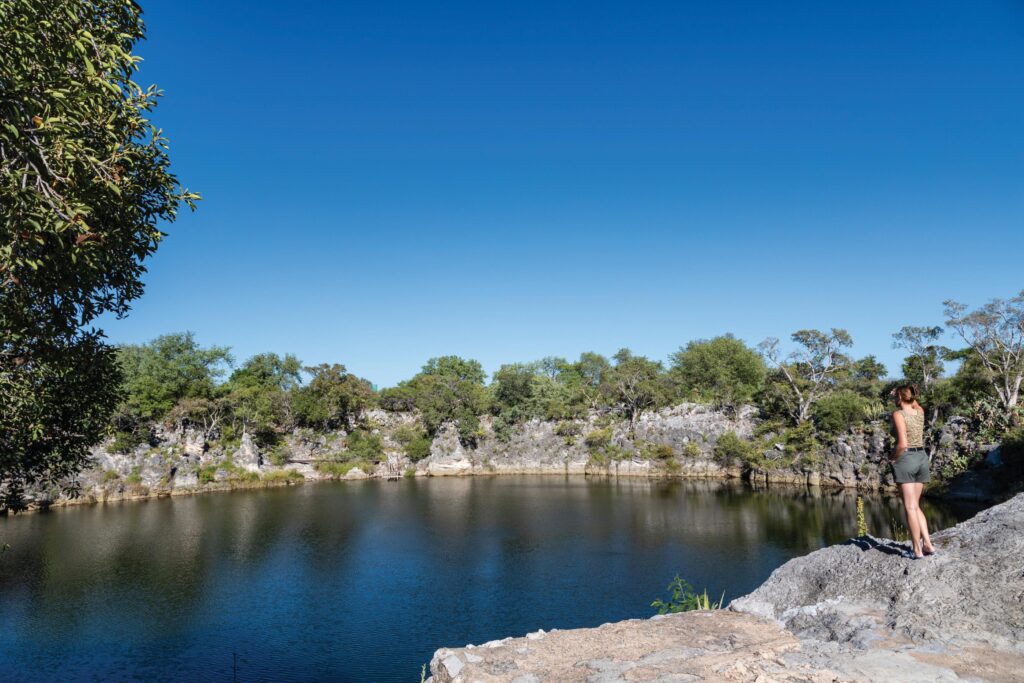
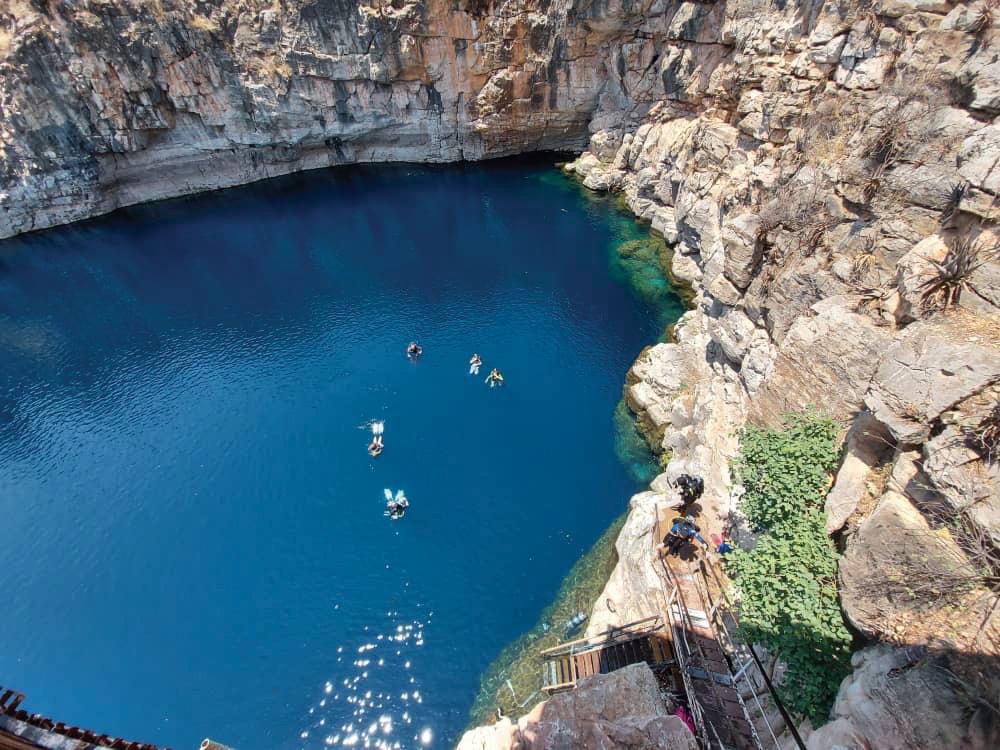
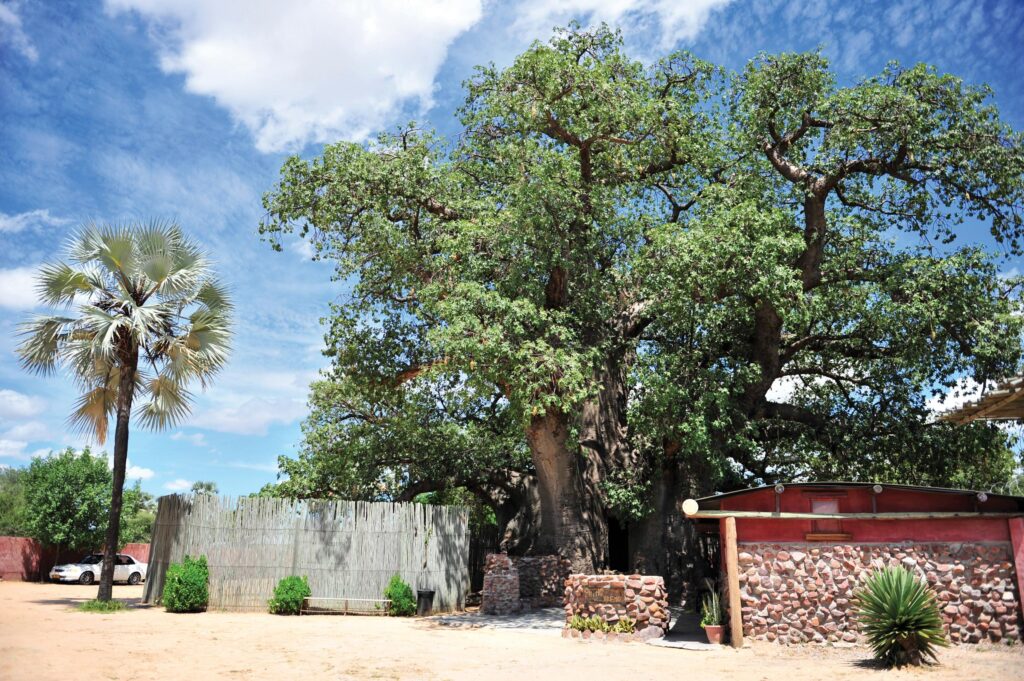
Tourism in this vast flat region, typified by oshanas, makalani palms and herds of cattle, used to be virtually non-existent. However, these days it is steadily increasing. The area has a rich and interesting cultural and historical tradition, which can be explored by visiting some of the sites in the surroundings.
The town of Oniipa hosts the Onandjokwe Medical Museum in the grounds of the Onandjokwe Hospital. Built by the Finnish Mission Society in 1911, Onandjokwe was the first hospital in Owambo.
The Eenhana Heroes’ Memorial Shrine depicts the history of the liberation struggle and acknowledges the courage of the combatants of the People’s Liberation Army of Namibia (PLAN) and the civilians who supported them.
The main attraction at the Ombalantu Baobab Heritage Centre is a huge Baobab tree estimated to be around 700-750 years old. During tribal wars the tree served as a hiding place and was later also used as a post office and a chapel. The centre, located in Outapi, also offers camping sites laid out under the tree, as well as a small kiosk, a craft centre and facilities for day visitors.
OTJIKOTO AND GUINAS LAKES
Lake Otjikoto, located 24 km northwest of Tsumeb in the Oshikoto Region, was used as a unique underwater dumping site in 1915 when retreating German forces disposed of their military equipment during the South West Africa Campaign. South African divers of the Ministry of Works recovered armaments in January 1916 while several more pieces of armaments were brought to the surface during subsequent diving expeditions. What’s left in the lake can be inspected by qualified divers. The majority of the armaments are on display in the Tsumeb Museum.
The 130 metre-deep Lake Guinas, which lies northwest of Otjikoto, is noted for its beautiful setting and the dark inky-blue colour of its water. However, since it is on a farm, permission to view it needs to be obtained from the farmer.
Visitors to Namibia who are qualified divers are welcome to join club members on a journey of underwater exploration to view these two geological curiosities.
A rare, mouth-breeding species of tilapia or dwarf bream is found in both of these sinkhole lakes.
Main culture in this area
The Aawambo
THE AAWAMBO
The people collectively referred to as the Aawambo live in central northern Namibia, an area formerly known as Owambo, and southern Angola. In about 1550, groups of these people, who have a common origin and culture, moved southwards from the Great Lakes in East Africa and settled between the Kunene and Okavango rivers. Eight of these communities, representing around half of Namibia’s population, live in northern Namibia, while four communities live in Angola’s southern Cunene Province. The Aawambo communities are administered by traditional authorities headed by a king, queen or a chief. The Aandonga, Aangandjera and Aakwaluudhi are ruled by a king, while the Aakwanyama made history when a queen was installed in November 2005.
The traditional authorities of the Aakwambi, Aambalantu, Aambadja and two small communities in western Owambo, the Aakonlonkadhi and Unda which are under a single traditional authority, are administered by traditional authorities headed by a chief. A council of seniors and councillors assists the king, queen or chief in the performance of his or her duties. It is often mistakenly assumed that Oshiwambo is the language of the Aawambo, but it is in actual fact a cluster of closely related dialects. The languages of the Aandonga and the Aakwanyama, the two largest communities, as well as the Aakwambi have been developed into written languages.
The Aawambo people who live on the land practise a mixed economy of subsistence agriculture and stock farming with cattle and goats. Omahangu (pearl millet), sorghum and beans are the main dryland crops. A wide variety of leafy green vegetable plants and wild fruits are collected to supplement the staple diet of oshithima (pearl millet porridge). Fish are caught in the watercourses (iishana) during seasonal floods and in the rainy season.
Aawambo houses are traditionally of the rondavel type, mostly surrounded by wooden palisades and often connected by passages. Cattle kraals (enclosures) usually form part of the complex which is surrounded by fields cultivated seasonally.
Numerous small bars, locally known as cuca shops, small enterprises and locally owned shopping complexes are testimony to the business acumen of the Aawambo. Open markets, a feature of all the towns in Owambo, are bustling places where vendors sell a variety of traditional food and other products.
THE TRADITIONAL LAND OF THE AAWAMBO PEOPLE
A large percentage of Namibia’s inhabitants live in the Omusati, Oshana, Ohangwena and Oshikoto regions between Etosha National Park and Namibia’s northern border with Angola. After the capital, this region has the largest urban concentration of people in the country. The major portion of these four regions, which have a total surface area of just over 56 100 km², consists of communal farming land – that is land where there is no individual ownership or demarcation and where the majority of the inhabitants live from subsistence farming.
Life on the vast plains of these essentially agricultural regions depends on the seasonal efundja, the floods that feed the rivers and iishana. The latter are flat, shallow depressions, many of which light up with copious growths of white lilies soon after they have filled with water in the rainy season. The highlands of Angola are the origin of these waters. After a long journey southwards, the Cuvelai River disperses its contents into many channels, covering the sandy flats of southern Angola and spreading into northern Namibia to form a large expansive delta of rivulets and iishana. These, in turn, provide drinking water for humans and animals, protein in the form of fish and a habitat that supports large numbers of aquatic birds.
The essentially flat landscape is characterised by huge expansive marula trees and sporadic stands of the tall makalani palm, Hyphaene petersiana. Sap is tapped from the growing tip of the stems of these palms and left to ferment into a potent drink called palm wine. The fruit of the makalani palm takes two years to mature and has a white, bony kernel. Referred to as vegetable ivory, the hard kernel is suitable for carving small ornaments, jewellery and curios.
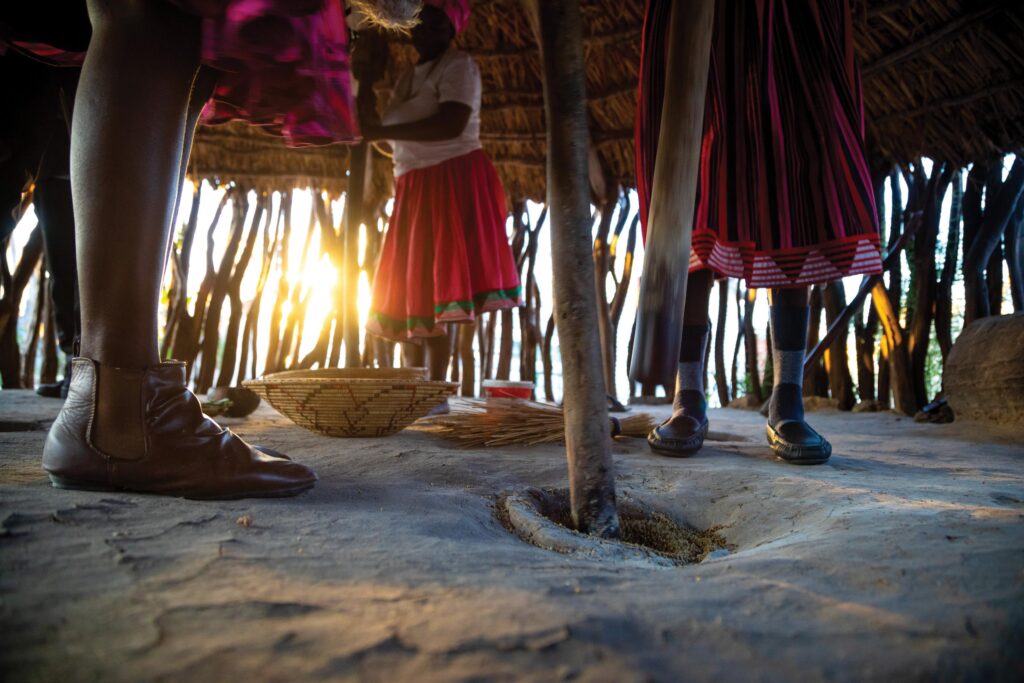
EXPERIENCING AAWAMBO CULTURE
The Uukwaluudhi Traditional Homestead at Tsandi in the Omusati Region is a good place to learn about the history and culture of the Aakwaluudhi. Guides take visitors through the homestead, the former palace of King Josia Taapopi, pointing out the customs and history of the Aakwaluudhi. Historic photos and maps of the Finnish Mission Society and early Owambo can be viewed in the Nakambale Museum at Olukonda. There are also several displays of traditional domestic implements, clothing, decorations and weapons of the Aandonga. The museum forms part of the historic Finnish mission complex which is a national monument that includes the church and the nearby cemetery. A guided tour through the adjacent traditional Aandonga homestead provides an interesting insight into the history, culture and way of life of the Aandonga people. The Oshituthi Shomagongo (Marula Fruit Festival) is rotated among the eight communities. The two-day event is usually held in March or April during the marula season. The festival was inscribed in the UNESCO Representative List of the Intangible Cultural Heritage of Humanity in 2015.
Top adventures in this region
GAME DRIVE
Game drives in Etosha National Park offer an exhilarating way to experience Namibia’s diverse wildlife. The park is renowned for its vast salt pan, surrounded by savannah, woodlands, and waterholes that attract a variety of animals, including elephants, lions, rhinos, and giraffes. On a game drive, visitors have the chance to observe these animals in their natural habitat, often up close, as they gather around water sources or roam the open plains. The best times for game drives are early morning and late afternoon when wildlife is most active, providing unforgettable encounters with Africa’s iconic species.
BIRD WATCHING
Bird watching in this region offers a unique experience in one of Africa’s most diverse wildlife regions. Etosha is home to over 340 bird species, including rare and endemic birds like the Blue Crane and the Violet Woodhoopoe. Etosha’s varied habitats, from salt pans to savannahs, provide ideal conditions for spotting birds throughout the year. The dry season, when waterholes attract large flocks, is particularly rewarding for birders. Whether you’re an avid ornithologist or a casual observer, the rich avian life adds a vibrant dimension to the safari experience.
Accommodation
ETOSHA NATIONAL PARK & OWAMBO
Namibia’s central north, characterised by culture and the country’s most famous and successful national park.
- Hobatere Lodge
- Ongula Homestead Village
- Etosha Oberland Lodge
- The Mushara Collection
- Natural Selection
- NWR – Etosha National Park
6a. Dolomite Resort
6b. Onkoshi Resort
6c. Okaukuejo Resort
6d. Halali Resort
6e. Olifantsrus Camp
6f. Namutoni Resort - Onguma Nature Reserve
- Ongava Game Reserve
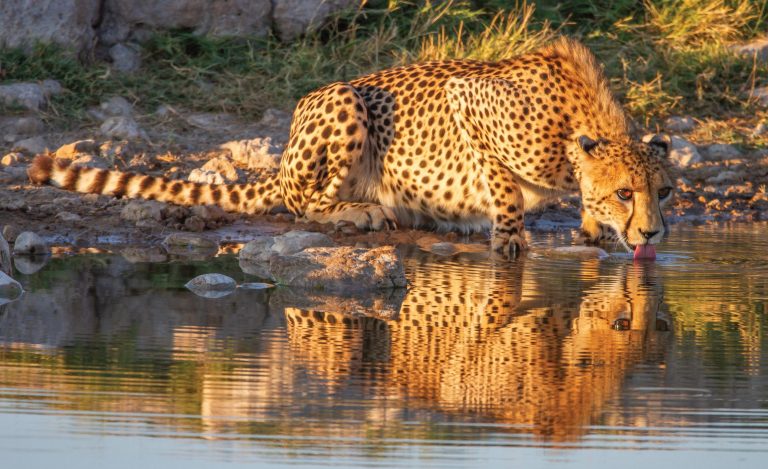
The Mushara Collection
The Mushara Collection Luxury accommodation on the outskirts of Etosha National Park The Mushara Collection is an oasis of hospitality and bespoke service, where the staff are the soul behind the brand. Mushara offers luxury accommodation on the doorstep of the famous Etosha National Park, located just 8 km from the Von Lindequist gate of
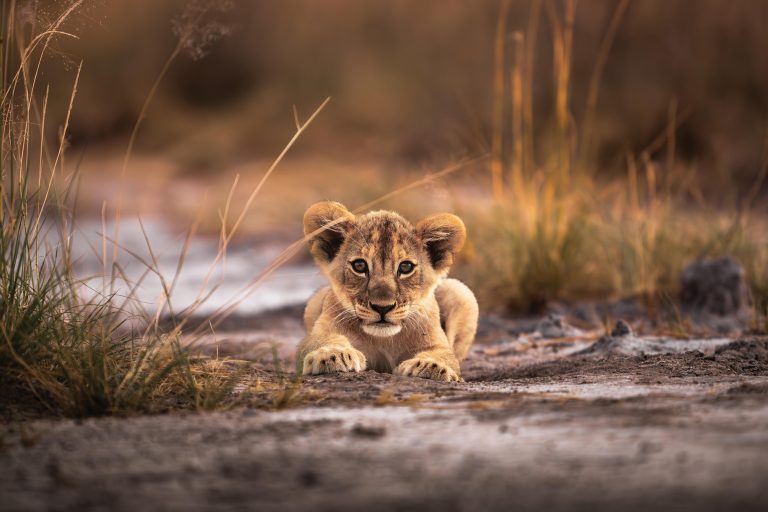
Onguma Nature Reserve
Onguma Nature Reserve Sharing the eastern boundary of Etosha National Park, Onguma Nature Reserve is a beguiling mixture of sophistication and relaxation, of elegance and the earth. In the local Herero language, Onguma means ‘the place you don’t want to leave’, and the 34 000-hectare private reserve certainly lives up to its name. Onguma Camp
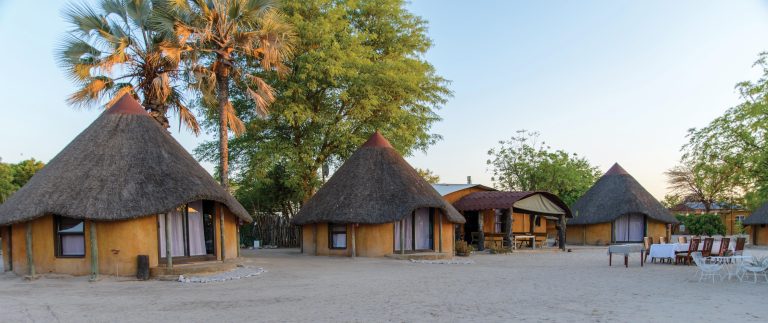
Ongula Homestead Village
Ongula Homestead Village Nestled amidst the enchanting and rugged landscapes of Northern Namibia, Ongula Homestead Village is more than just a destination – it’s a doorway to the authentic heart of Owamboland’s culture, history, and natural beauty. Situated in the heart of Owamboland, our lodge offers a unique opportunity to connect with the Ovambo people
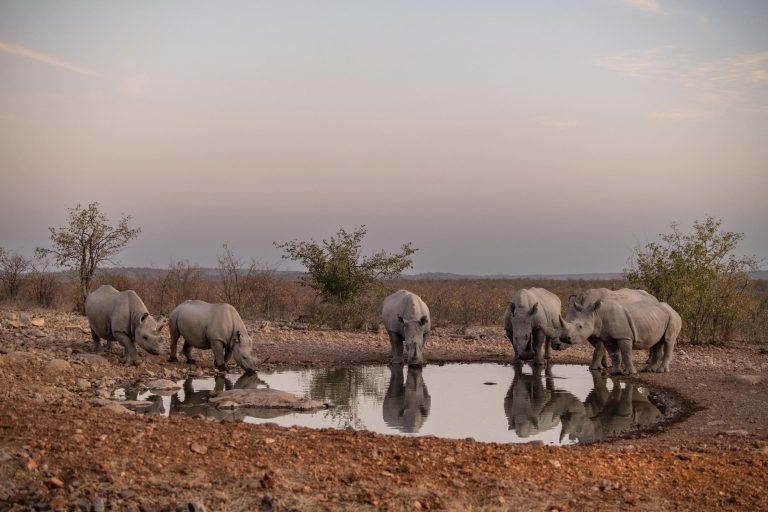
Ongava Game Reserve
Ongava Game Reserve Nestled in the mountains and plains, Ongava Game Reserve provides visitors with the ultimate in accommodation, offering comfort, luxury and a connection to the earth. Each lodge on Ongava has its own unique style, layout and atmosphere; but all offer the same wonderful sense of luxurious seclusion. Built from local materials in
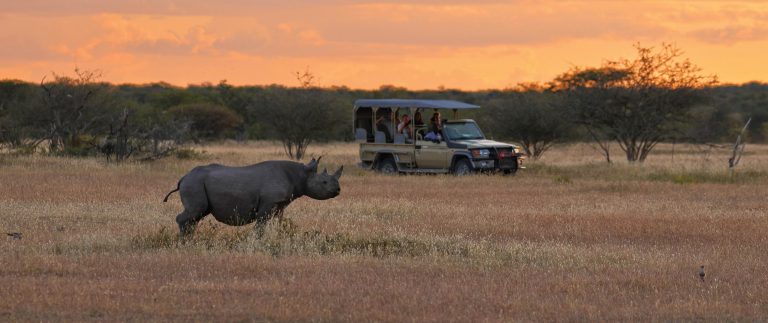
Natural Selection – Etosha
Natural Selection – Etosha Safarihoek Lodge In the middle of northern Namibia’s arid, captivating savannah, bordering the world-famous Etosha National Park, is Safarihoek Lodge. Perched on top of a hill, overlooking the plains below, Safarihoek is a stylish retreat, and you’ll find cool, thatched chalets all with private decks, a double-storey photography hide, and a
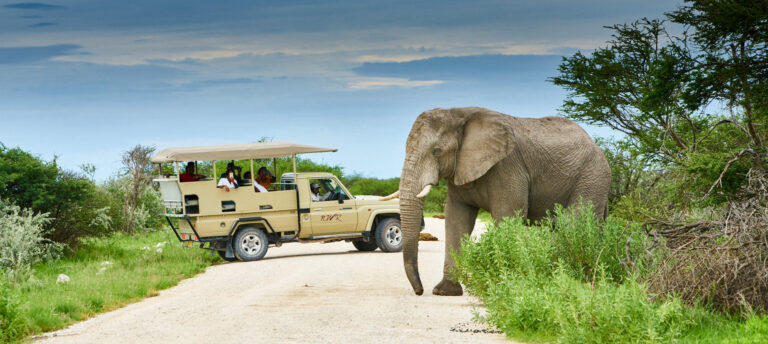
Namibia Wildlife Resorts – Etosha National Park
Namibia Wildlife Resorts have a host of accommodation options for every traveller inside the famous Etosha National Park.
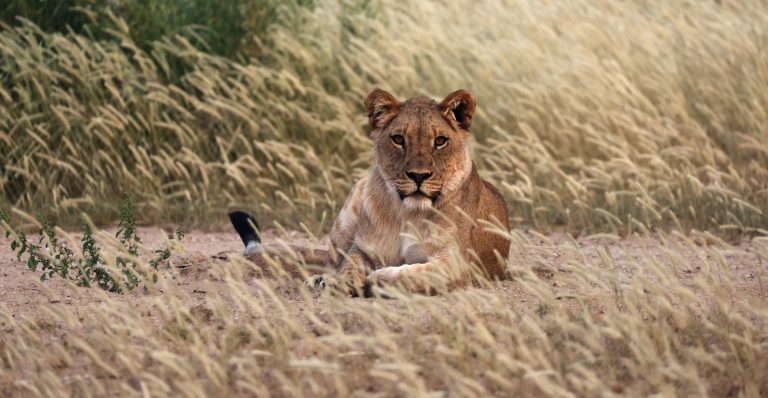
Hobatere Lodge
Hobatere Lodge The ≠Khoadi-//Hôas Conservancy, home of Hobatere Lodge, is situated on the western border of Etosha National Park, a very short distance from the Galton Gate. This jewel of a lodge in its idyllic setting has earned the nickname “Little Etosha” due to its location and bounteous wildlife. The name “Hobatere” translates to “find
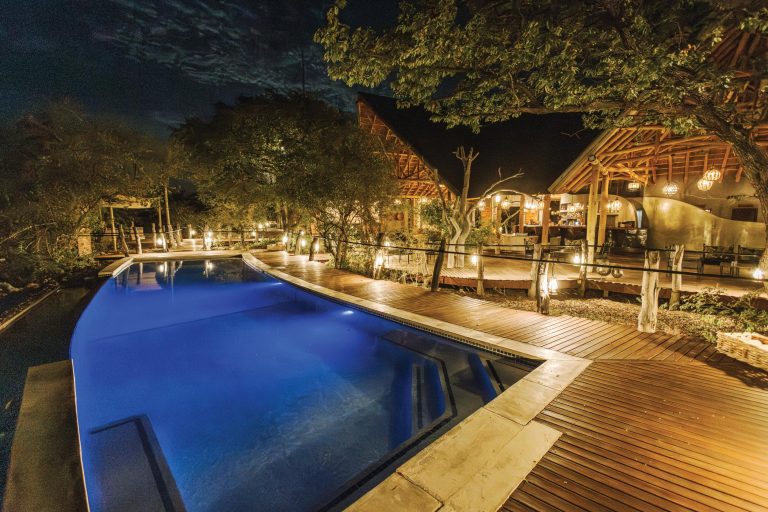
Etosha Oberland Lodge
Etosha Oberland Lodge Etosha Oberland Lodge, 10 kilometers southeast of Anderson Gate, is located in a 5500-hectare private game reserve that shares a 10-kilometer border with the famous Etosha National Park. The lodge’s hallmarks are luxury and plenty of privacy. This remarkable place is superbly suited for safari excursions into Etosha. The main building is
Community Campsites in this Region
A community campsite is a type of camping facility managed and operated by local communities, often in collaboration with conservation organizations or tourism bodies. These campsites are designed to offer tourists a more immersive and culturally enriching experience, while also providing economic benefits to the locals.
- A variety of accommodation options are available at the Nakambale Museum in the village of Olukonda, 14 km southwest of Ondangwa.
- The Omauni Community Campsite is located at the Centre for Sustainable Forest Management, east of Okongo.
- The Ombalantu Baobab Tree Campsite is situated on community land behind the brightly-painted open market in Outapi. It is a heritage site with a large baobab tree at the centre of the campsite.

